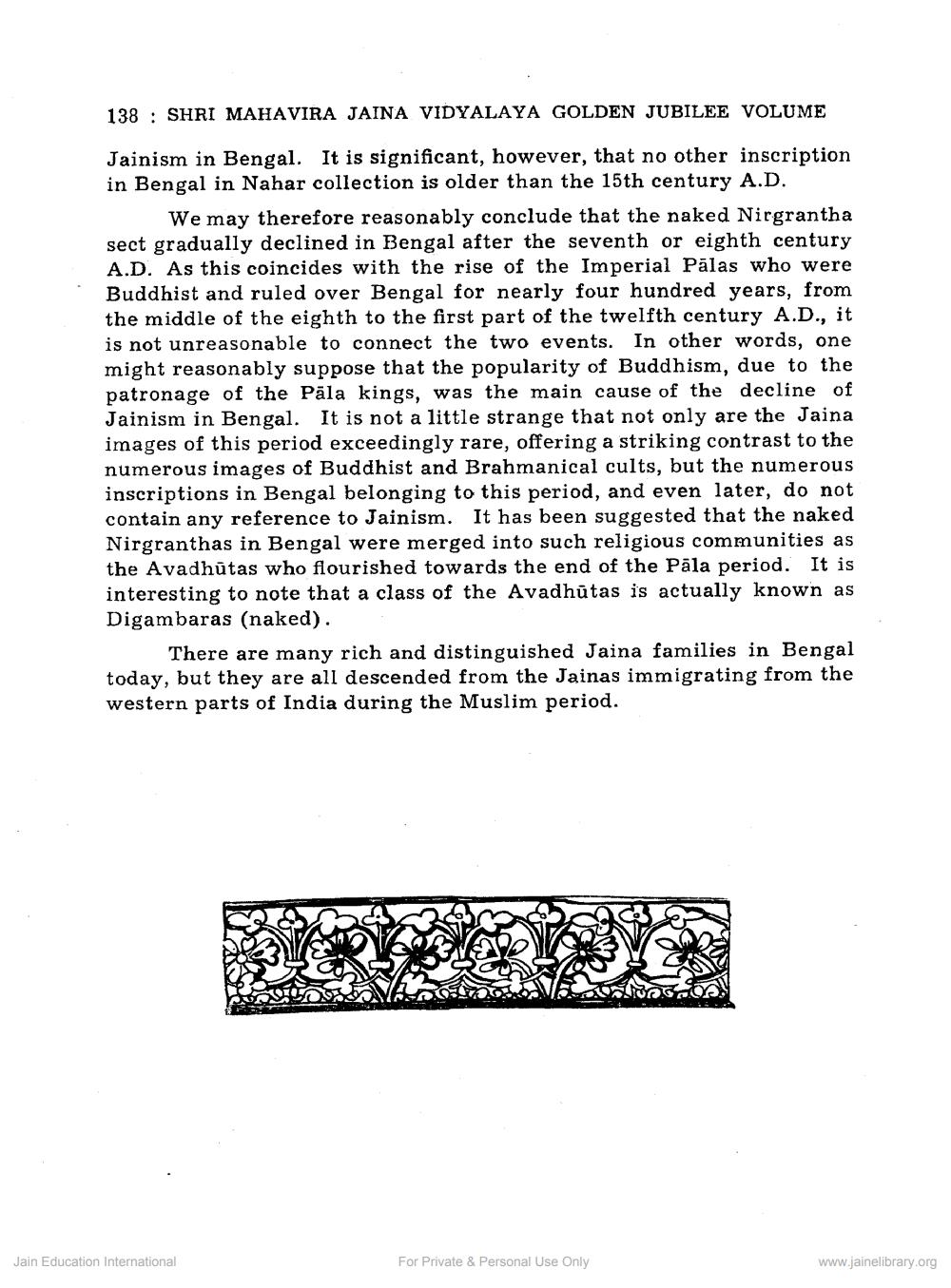Book Title: Jainaism in Ancient Bengal Author(s): R C Majumdar Publisher: Z_Mahavir_Jain_Vidyalay_Suvarna_Mahotsav_Granth_Part_1_012002.pdf and Mahavir_Jain_Vidyalay_Suvarna_ View full book textPage 9
________________ 138 : SHRI MAHAVIRA JAINA VIDYALAYA GOLDEN JUBILEE VOLUME Jainism in Bengal. It is significant, however, that no other inscription in Bengal in Nahar collection is older than the 15th century A.D. We may therefore reasonably conclude that the naked Nirgrantha sect gradually declined in Bengal after the seventh or eighth century A.D. As this coincides with the rise of the Imperial Palas who were Buddhist and ruled over Bengal for nearly four hundred years, from the middle of the eighth to the first part of the twelfth century A.D., it is not unreasonable to connect the two events. In other words, one might reasonably suppose that the popularity of Buddhism, due to the patronage of the Pala kings, was the main cause of the decline of Jainism in Bengal. It is not a little strange that not only are the Jaina images of this period exceedingly rare, offering a striking contrast to the numerous images of Buddhist and Brahmanical cults, but the numerous inscriptions in Bengal belonging to this period, and even later, do not contain any reference to Jainism. It has been suggested that the naked Nirgranthas in Bengal were merged into such religious communities as the Avadhutas who flourished towards the end of the Pala period. It is interesting to note that a class of the Avadhutas is actually known as Digambaras (naked). There are many rich and distinguished Jaina families in Bengal today, but they are all descended from the Jainas immigrating from the western parts of India during the Muslim period. తగా: Jain Education International For Private & Personal Use Only www.jainelibrary.orgPage Navigation
1 ... 7 8 9
